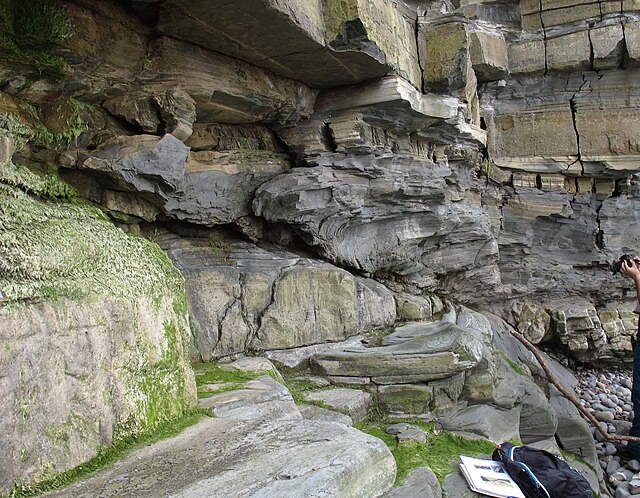The Glarus thrust is a major thrust fault in the Alps of eastern Switzerland. Along the thrust the Helvetic nappes were thrust more than 100 km to the north over the external Aarmassif and Infrahelvetic complex. The thrust forms the contact between older (Helvetic) Permo-Triassic rock layers of the Verrucano group and younger (external) Jurassic and Cretaceous limestones and Paleogene flysch and molasse.
The Tschingelhörner on the border of Swiss cantons Glarus and Graubünden. The Glarus thrust can be seen as a horizontal line in the cliffs.
Martinsloch
Drawing of the Glarus thrust in the Tschingelhörner by Hans Conrad Escher von der Linth, 1812.
Glarus thrust fault at Piz Segnes
A thrust fault is a break in the Earth's crust, across which older rocks are pushed above younger rocks.
Thrust fault in the Qilian Shan, China. The older (left, blue, and red) thrust over the younger (right, brown).
The Glencoul Thrust at Aird da Loch, Assynt in Scotland. The irregular grey mass of rock is formed of Archaean or Paleoproterozoic Lewisian gneisses thrust over well-bedded Cambrian quartzite, along the top of the younger unit.
Small thrust fault in the cliffs at Lilstock Bay, Somerset, England; displacement of about two metres (6.6 ft)
Antiformal stack of thrust imbricates proved by drilling, Brooks Range Foothills, Alaska








